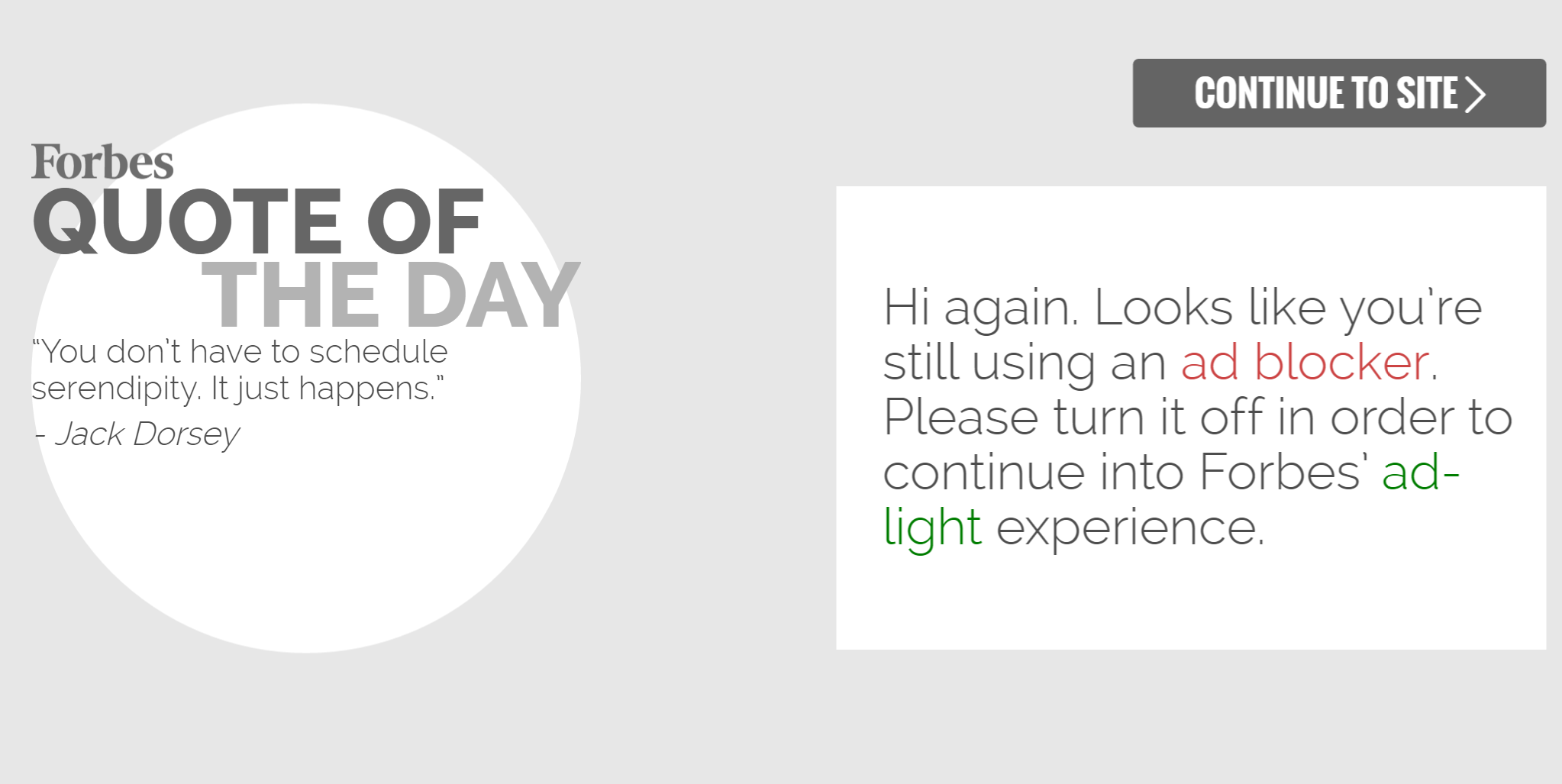Sometimes we get just what we deserve.
This week the news hit that Wired is about to start offering an ad-free edition of its website for a reasonable subscription fee. For $3.99 you get access to a version of the website that shows no ads at all. That’s a pretty reasonable-sounding $1 per week, which seems like a lot for some of the web’s most terrific tech and culture and cybersecurity journalism.
In full disclosure: I worked at Wired.com for four years, 2007-2011, and I still know some of the good people there. I was and still am a strong believer in the website. I like Wired a lot and I want it to succeed.
But it’s the other part of this announcement that will make people upset: If you’re running an ad blocker, Wired.com will now block you. In other words, if you want to read the Wired website, you have a choice: See all the ads, or pay for access to the ad-free edition. It will no longer be possible to hack your Wired.com experience using an ad blocker.

Ironically, the “ad-light” experience actually has more ads than the regular experience.
How exactly the site will pull this off is still unclear. It’s not the first to fire back at ad-blocking users. I was surprised when visiting Forbes.com last month to see that its usual “please turn off your ad blocker” splash screen had gained the ability to enforce its request: If you keep your ad blocker on, Forbes will no longer let you past that splash screen. I assume Wired will do something similar.
That countermeasure will probably be met by other, more sophisticated counter-countermeasures, and the war between advertisers and ad blockers will continue. But in the meantime, it has already caused cries of outrage about Wired seceding from the open web: “So much for fair use” tweeted Chris Messina.
The critics have a point. Wired’s last experiment with a “closed” publishing platform was its iPad magazine. That project was widely lauded, and won prizes for its beauty and sophistication. It also weighed in at half a gigabyte per issue, and after the initial enthusiasm wore off, struggled to retain readers and generate revenue, according to reports I’ve heard. Among other problems: Advertisers weren’t getting the data they were accustomed to seeing, and readers weren’t able to share and use content in the ways they were accustomed to doing it (tweeting it, Facebooking it, saving it to Evernote, or whatever). Some of those bugs were fixed in later editions but the app never had the seamless ability to interconnect and share that the website did.
A similar fate may befall Wired.com’s new paywall, if it’s not able to find a way to keep the casual browsers and sharers of content engaged. A hard anti-ad-blocking wall may just wind up pissing off those readers, 20 percent of whom are now using ad blockers, Wired reports. (The percentage is even higher at other, more tech-centric websites, I’ve heard.)
Unfortunately, the publishing industry brought this on itself, along with its readers and advertisers. We taught readers over a decade ago that the price for reading high-quality journalism should be zero. We taught readers and advertisers that the most effective form of Web ad was the kind that was most in-your-face: Pop-ups, takeovers, and interstitials. We taught advertisers that Web readers were worth about 1/10 print readers. We continued to exalt print products as the paragon of quality and design, whether that was advertising or reporting: The Pulitzers, ASMEs, and similar industry awards were all slow to embrace online content.
And not only that: Craigslist taught us that the value of a classified ad should be zero. Google and DoubleClick taught us that advertising was a commodity, best bought and sold in an auction market that didn’t differentiate between publications, audiences, or platforms. Apple and Facebook taught us that the best way to engage readers was to forget about the open Web and just develop apps, where you can track people even more closely and deliver any kind of messages to them whenever you want, without restriction.
So yeah, you can see why Wired, like Forbes, has found itself at this desperate juncture. A large and growing segment of its audience has decided to block the site’s primary source of revenue, so it is fighting back with a carrot and a stick. Will the carrot be tasty enough to be worth $52 a year? Will the stick be painful enough to make people whitelist Wired.com in their ad blockers, or cough up the subscription fee?
Or will this just be another salvo in the ongoing war between publishers and their readers?



